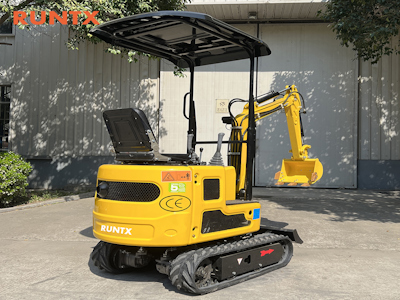
Современная промышленность переживает беспрецедентную трансформацию, движимую технологическими инновациями, и среди ключевых элементов этой революции находятся гидравлические цилиндры. Эти устройства, основанные на принципах гидравлики, кардинально изменили способы работы машин и оборудования, обеспечивая высокую мощность, точность и надежность. В этой статье мы глубоко погрузимся в мир гидравлических цилиндров, исследуя их историю, механизмы, применение, преимущества, вызовы и будущее, чтобы продемонстрировать, как они стали неотъемлемой частью промышленного прогресса.
История и эволюция гидравлических цилиндров
История гидравлических цилиндров уходит корнями в древние времена, когда первые гидравлические системы использовались для ирригации и простых механизмов. Однако настоящий прорыв произошел в 17 веке с работами Блеза Паскаля, который сформулировал закон Паскаля, лежащий в основе гидравлики. В 19 веке промышленная революция ускорила развитие гидравлических технологий; например, Джозеф Брама разработал гидравлический пресс в 1795 году, который демонстрировал силу жидкостей под давлением. К началу 20 века гидравлические цилиндры стали широко применяться в автомобильной и авиационной промышленности, особенно во время Второй мировой войны для военной техники. С 1950-х годов Advances in materials science and engineering, such as the use of high-strength steels and seals, enabled the creation of more efficient and durable cylinders. The digital age brought computer-aided design (CAD) and automation, further refining their performance. Today, гидравлические цилиндры эволюционировали в умные устройства с датчиками и IoT-интеграцией, продолжая революционизировать отрасли от manufacturing to construction.
Принципы работы и основные компоненты
Гидравлический цилиндр работает на основе закона Паскаля, который гласит, что давление, приложенное к замкнутой жидкости, передается equally во всех направлениях. Основные компоненты включают: цилиндрический корпус, поршень, шток, уплотнения, и жидкость (обычно hydraulic oil). Когда жидкость под давлением поступает в цилиндр, она толкает поршень, создавая линейное движение. Это движение может быть использовано для подъема, толкания, или pulling heavy loads. Существуют различные типы цилиндров, such as single-acting (давление applied in one direction only), double-acting (pressure applied in both directions for bidirectional movement), and telescopic cylinders for extended reach. Efficiency зависит от factors like pressure rating, bore size, and stroke length. Modern cylinders often incorporate advanced features such as position sensors for precision control and anti-corrosion coatings for longevity, making them indispensable in high-demand applications.
Применение в различных отраслях промышленности
Гидравлические цилиндры нашли широкое применение across multiple industries due to their versatility and power. In construction, они используются в экскаваторах, bulldozers, and cranes for earthmoving and lifting tasks. In manufacturing, они приводят в действие прессы, injection molding machines, and robotics assembly lines, enhancing productivity and automation. The automotive industry relies on them for vehicle lifts, braking systems, and suspension components. In agriculture, гидравлические цилиндры power tractors and harvesters, enabling efficient farming operations. The aerospace sector uses them in landing gear and control surfaces for aircraft. Additionally, они critical in energy sectors like oil and gas for drilling equipment, and in marine applications for steering systems. Their ability to handle extreme loads and environments makes them a cornerstone of modern industrial operations, driving efficiency and safety.
Преимущества и инновации
Гидравлические цилиндры offer numerous advantages that have fueled their revolutionary impact. Key benefits include high power density (ability to generate large forces from compact designs), smooth and precise control, reliability under heavy loads, and adaptability to various conditions. Innovations have further enhanced these traits; for instance, the development of electro-hydraulic systems integrates electronic control for improved accuracy and energy efficiency. Smart cylinders with embedded sensors provide real-time data on pressure, position, and temperature, enabling predictive maintenance and reducing downtime. Materials innovations, such as composite materials and advanced seal technologies, increase durability and reduce weight. Energy-saving designs, like variable displacement pumps, minimize power consumption. These advancements not only boost performance but also contribute to sustainability by reducing waste and improving resource utilization, positioning гидравлические цилиндры as leaders in the industrial revolution.
Вызовы и решения
Despite their benefits, гидравлические цилиндры face challenges such as leakage of hydraulic fluid, which can lead to environmental contamination and efficiency losses. Wear and tear on seals and components require regular maintenance, increasing operational costs. High energy consumption in some systems is another issue, particularly in era of growing emphasis on sustainability. To address these, industry has developed solutions: improved seal designs using materials like polyurethane reduce leakage; condition monitoring systems with IoT enable proactive maintenance, preventing failures; and energy-efficient hydraulics, such as hybrid systems that combine hydraulic and electric power, cut down on energy use. Additionally, training for operators on proper usage and maintenance helps extend lifespan. These efforts ensure that гидравлические цилиндры remain viable and eco-friendly, overcoming obstacles to maintain their revolutionary role.
Будущие тенденции и заключение
Looking ahead, the future of гидравлические цилиндры is bright with emerging trends. Integration with Industry 4.0 technologies, such as AI and machine learning, will enable autonomous operation and optimization. Developments in biodegradable hydraulic fluids will enhance environmental friendliness. Miniaturization and lightweight designs will expand applications in robotics and aerospace. Moreover, increased focus on circular economy principles may lead to more recyclable components. In conclusion, гидравлические цилиндры have undeniably revolutionized industry by providing unmatched power and reliability. From their humble beginnings to smart, connected devices, they continue to drive progress across sectors. As technology advances, их роль will only grow, solidifying their place as a cornerstone of industrial innovation and efficiency, paving the way for a more productive and sustainable future.



 1388xx888xx
1388xx888xx